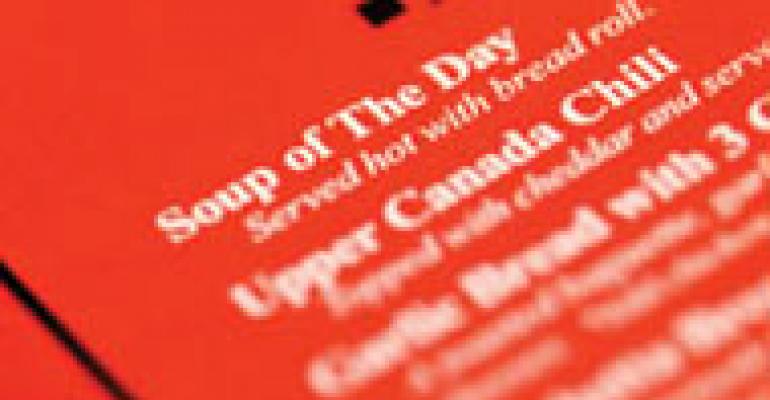Glowing reviews and good marketing are integral to a restaurant’s success, but the menu may be the most important way a chef or owner impacts the customers. Consultants and academics agree that a little careful menu engineering, both in the mix of items offered and the way they’re presented, goes a long way toward achieving success. Following are some tips to consider:
Balance your menu. Offset the increased costs of premium menu items, which tend to be the least profitable, by using lower-priced ingredients such as chicken, fish, pasta, organ meats and more obscure cuts of beef, restaurant consultant Erik Blauberg says. Add vegetarian or vegan dishes to the mix. Vegetarian dishes, aside from being less expensive from a procurement and production basis, also mitigate the veto vote. “Usually, if you have a vegan in your party, that will dictate where the party eats,” Blauberg says. “They want to make sure everybody’s going to be satisfied, so diversity is going to be very important on the menu.” Target menu price increases. Restaurant coach David Scott Peters of Smile Button Enterprises says raising menu prices across the board is a “Band-Aid approach.” Instead, he suggests, consider hiking the price of your restaurant’s signature bestseller slightly and getting rid of the dogs on your menu. If the signature item is as irresistible as it needs to be, Peters says, a small price increase with that dish could let restaurateurs hold the line on the rest of the menu. Train, train, train. Blauberg and Peters both stress that training servers to know everything about a restaurant’s dishes is a crucial part of menu engineering. A knowledgeable, confident server not only can supplement menu descriptions with an effective explanation, but also knows how to upsell items. Try a few subtle tricks. Anecdotal evidence and empirical research show that how a menu is presented affects how guests perceive price and value. If a great picture accompanies a menu item, Peters says, that dish tends to sell more. He also suggests printing the price of the item in a smaller font. A study conducted last year by The Culinary Institute of America and Cornell University showed that customers spent an average of 8 percent more when menus were printed without dollar signs or the word “dollars” in the list of prices. References to dollars, the schools found, “activated concepts of cost or price, initiated a pain of paying, and consequently caused guests to spend less.” Don’t forget about beverages. These typically are the highest-margin items on any menu and usually aren’t included in prix-fixe meal deals.




